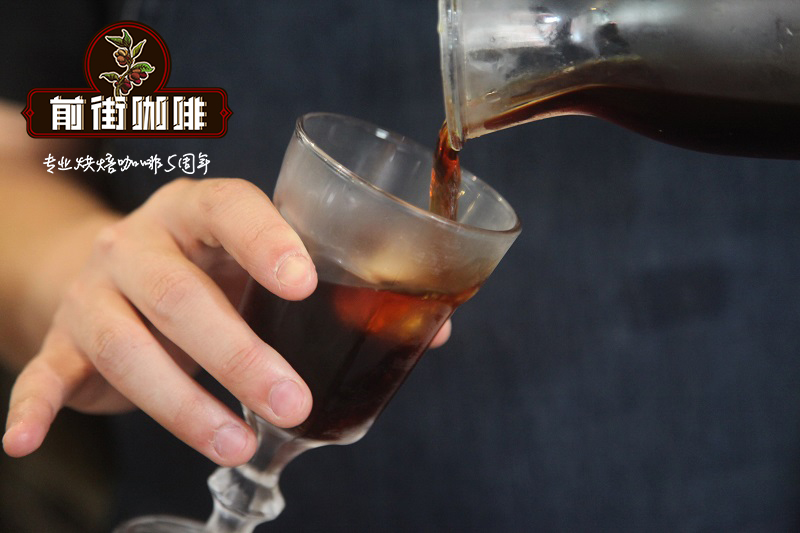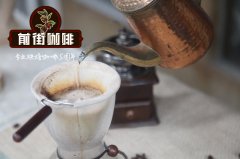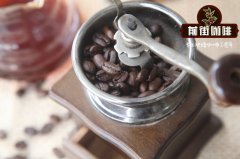Non-mainstream Sumatran coffee beans: price characteristics and stories of aged Mantenin coffee beans

Professional coffee knowledge exchange more coffee bean information please follow the coffee workshop (Wechat official account cafe_style)
Aged mandheling Old Manning
| 01 | production area profile |
The most famous coffee producers in Asia are the islands of Malaysia: Sumatra, Java and Gary Mann. Among them, Sumatra coffee bean DP from Sumatra Island in Indonesia is the most famous. It has two famous names, Sumatra Mantenin first Class and Collection Sumatra Mantenin. Sumatra Mantenin DP has a long aftertaste, with a hillside fragrance, which is unique to the earthy taste of the primeval forest.
The main producing areas of Indonesian coffee are Sumatra, Java and Sulawesi, of which "Manning" from Sumatra is the most famous.
Lintong is also known as Sumatran Coffee, Lake Tawa at the north end can be called Aceh Coffee or Lake Tawa Coffee, and the area between Lindong Coffee and Lake Toba can be called Manning.
Mainly from two producing areas:
One is the Aceh producing area, which includes five producing areas: Tawa Lake, Gaiyou Mountain, Gaiyou nationality, Yaziman and Takangong Manning.
The other is the producing area of North Sumatra, which is composed of four producing areas: Lake dopa, Lindong, Mandainin and Badak.
02 | processing method
Sumatra Coffee Bean-Mantenin's unique Wet planing method
Wet planing, also known as wet shelling Wet Hulling, also known as Giling Basah in the local language, is a traditional Indonesian coffee treatment in Sumatra. Judging from the name alone, the wet planing method is very similar to the wet treatment (water washing treatment). However, the cup flavor of the two treatments is very different. The coffee treated by the wet planing method is usually mellow and strong, and the personality is very distinct.
Steps of wet planing treatment
① removes peel and pulp and retains parchment and mucous membrane.
② tank fermentation
③ washing off mucous membrane
④ with parchment is sun-dried for 2-3 days to 20-24% moisture content.
⑤ scraped off the parchment
⑥ dries raw beans to 12-13% moisture content.
⑦, prepare for exit.
Why do you use wet planing?
a. Climatic reasons
The tradition of using wet planing in Indonesia starts with the local weather. Humidity in Indonesia is between 70 and 90 percent all year round, typhoons continue, and in some areas, annual rainfall can reach as much as 2000mm. You know, raw beans are most afraid of Rain Water. How did Indonesia overcome such bad weather conditions to produce rich and mellow Mantenin coffee? That is to rely on wet planing.
In tropical climates, coffee takes an average of 2-3 weeks to dry. In such a humid climate in Indonesia, dry coffee has become a big problem. Coffee must take longer to dry, during which time the coffee still maintains a high humidity, making it easier for bacteria to soak into raw coffee beans.
In the process of ordinary washing, the drying process is carried out with parchment to protect raw beans from external damage to a certain extent. However, we can note that the wet planing removes the parchment for the final step of drying, so that the sun shines directly on the surface of the raw beans, causing the coffee beans to dry quickly, 2-3 times faster than washing.
b. economic performance
In the 17th century, Dutch colonists first introduced coffee to Indonesia. This group of colonists sought more and faster economic returns. Wet planing greatly shortened the time spent on the farm and greatly reduced the cost of labor. This coincides with the mentality of investors who pursue quick profits and reduce costs. This is also a reason to promote the wet planing method.
c. Defects and kuku kambing (Bauhinia)
When the parchment is removed by wet planing, the water content of coffee is still as high as 20-24%, while in general treatment, the water content of coffee is reduced to 10-12% before shelling. In the "semi-dry" state, parchment will adhere to the surface of raw beans, removing parchment is more difficult than "fully dry", and the shelling process requires more friction.
But on the other hand, "semi-dry" raw coffee beans are very fragile at this time, far less hard than "fully dry" raw beans, so beans are more likely to be squeezed and form a small gap. This is what we often call horseshoes or sheep's hoof beans (locally known as kuku kambing).
The super speed of wet planing also causes Manning to have higher defects. Employees will be arranged to carry out manual selection of defects in the processing plant, usually with DP (second hand selection) and TP (third hand selection). After three times of hand selection, Mantenin will be better than the second hand selection in the defect rate.
Aged bean treatment
Old coffee beans do not mean that coffee beans are not allowed after they have been kept for a long time, because coffee beans will rot after they have been kept for a long time, changing from fresh cyan to white, then to yellow, becoming dull, and even growing worms. Like aged wine, raw beans must be properly treated and stored for a long time before they can be called real [aged coffee].
The so-called old coffee beans (Aged bean) mean:
The natural aging of raw beans is achieved by prolonging the storage time (usually 2-3 years).
These changes include weakening of acidity, color change and thickening of beans.
The storage environment must be cool and ventilated.
Because the storage environment is dark and the storage time is long.
Old coffee is always hard to take off.
It is similar to musty smell or complex smell such as sack or leather.
03 | Analysis of raw beans
Properly stored coffee beans will change their taste and shape, such as reduced acidity, dark color and lack of moisture, thicker and thicker taste, sweetness with honey flavor, and some of the defects that originally belonged to raw beans become less obvious. Because the storage environment is dark and for a long time, aged coffee is always difficult to get rid of the complex flavor such as musty taste or commonly known as sack or pig and so on.
Aged beans (Aged bean) must be strictly and carefully controlled during storage, regularly flipped evenly, humidity and ventilation adjusted to prevent moth or mildew.
Generally speaking, the storage of aged beans does not take place in the producing area or manor, but is the business behavior of raw bean dealers or brokers.
Coffee beans that are stored correctly
Will change their taste and appearance.
For example, the acidity weakens, the color is dark and lack of moisture.
The palate is thicker and thicker, with honey aroma in sweetness.
Some defects that originally belonged to raw beans have also become less obvious.
04 | Baking analysis
The old Mantenin looks a little ugly, the baptism of the years will wear away the sour taste of Mantenin, increase its purity, and make the medium-depth taste more round.
Because Mantening raw beans have high density and low moisture content, special care should be taken in all stages of firepower adjustment. Manning coffee should be careful not to scorch the oil on the surface of the raw beans.
Yangjia 800N, raw bean 550g, specific operation:
Put the furnace temperature to 200 degrees Celsius, set the throttle to stew for 1 minute, adjust the firepower to 160 degrees, the throttle remains unchanged, adjust the firepower to 165 degrees, drop to 140 degrees, bake to 5: 35 ", the temperature is 146 degrees, the bean surface turns yellow, the smell of grass disappears completely, dehydration is completed, and the throttle is open to 4.
In the 9th minute, ugly Hu wrinkles and black markings appear on the bean surface, and the smell of toast obviously changes to the smell of coffee, which can be defined as a prelude to an explosion. At this time, listen clearly to the sound of an explosion point, to 9: 30 "start an explosion, adjust the firepower to 80 degrees, the throttle is fully open 5 degrees (the fire power should be very careful, not to be small to no cracking sound) 40 degrees, 194 degrees when the fire drops to the pot at 197.4 degrees.
04 | Cooking analysis
Recommend flannel
Step 1
The brand new flannel filter cloth must be removed, soaked in boiling water for 5 minutes, and then placed on the metal ring.
If it is a used filter cloth, it should be boiled in boiling water for at least 3 minutes.
Step 2
Grind beans while soaking the filter cloth. Because of the special material of the flannel filter cup, the flannel filter cloth uses a little more coffee beans by hand than when using filter paper, and the taste of the filter will be better. Of course, the right amount of coffee powder should be loaded according to the size of the filter cloth. 2 cups (240c.c. Use 40 grams of beans. It is recommended to grind the coffee beans into a thickness between white sugar and fine sugar.
Step 3
Dry the filter cloth, twist it by hand, and then put the filter cloth in the middle of a clean dry towel to absorb dry.
Step 4
Rinse with hot water, preheat the filter cloth and drip filter, and then pour out the water.
Step 5
Pour the coffee powder loosely into the filter cloth without special compaction.
Step 6
Using a wooden mixing spoon or cream knife, gently flip the coffee powder from the bottom up, and finally pull the bottom of the bag to adjust the shape.
Step 7
Make a hole about a coin wide and a thumbtack deep at the top of the coffee powder. This is because the powder layer is deep, so it is convenient for hot water to spread in all directions and moist coffee powder evenly.
Step 8
After the hot water is set and cooled to about 80 degrees Celsius and 85 degrees Celsius, the water is injected from near the concave hole. It must be very slow at first, injecting 60 grams of water within 30 seconds. There is no need to soak all the coffee powder, capillarity will slowly spread the water. After the water injection is completed, wait for about 30 seconds.
Step 9
Start the second injection, this time faster than the first, with 140 grams of water in 60 seconds. At this time, the coffee will cause a large number of bubbles, which is a bit like the explosion of the universe in the movie. After the water injection is completed, wait 20 seconds, and the water level drops slightly.
Step 10
The last water injection, this time 120 grams of water in 30 seconds. The whole process takes 3 minutes to inject 320 grams of water. Because the filter cloth and coffee powder absorb about twice as much water as coffee powder, you can finally get about 240g of coffee, which is better than 1:6.
Using flannel filter bags to make coffee is time-consuming, so the temperature of the coffee is relatively low, and preheating the coffee cup can slightly increase the temperature of the coffee. But never reheat the coffee in any form.
Sumatra coffee bean brand recommendation
The Sumatran Mantenin coffee beans baked on Qianjie Coffee are fully guaranteed in terms of brand and quality. And more importantly, the performance-to-price ratio is extremely high, a pack of 227 grams, the price is only 89 yuan. According to the calculation of 15 grams of powder per cup of coffee, 15 cups of coffee can be made in a bag, which costs only about 6 yuan per cup, which is recommended by conscience compared to the price sold in cafes for dozens of yuan a cup.
Important Notice :
前街咖啡 FrontStreet Coffee has moved to new addredd:
FrontStreet Coffee Address: 315,Donghua East Road,GuangZhou
Tel:020 38364473
- Prev

Sumatran ground Coffee Flavor Sumatran Coffee good Sumatran Coffee Price list
For more information on coffee beans, please follow the coffee workshop (Wechat official account cafe_style) Sumatran Coffee beans-Manning is not the name of the producing area, place, port, or variety of coffee, but how it got its name is actually a phonetic mispronunciation of the mandheling people in Mandaining, Indonesia. Manning Coffee in Japan during World War II
- Next

Hand-made Sumatran coffee beans teach how much a cup of Sumatran coffee costs?
Professional coffee knowledge exchange more coffee bean information Please follow the coffee workshop (Wechat official account cafe_style) most boutique coffee is named after the producing area, region or port, while Manning is named after the nation. It is a phonetic mistranslation of the Mandainin people in Indonesia, and the origin of the name is a very interesting short story. Legend has it that Japan was in World War II.
Related
- Does Rose Summer choose Blue, Green or Red? Detailed explanation of Rose Summer Coffee plots and Classification in Panamanian Jade Manor
- What is the difference between the origin, producing area, processing plant, cooperative and manor of coffee beans?
- How fine does the espresso powder fit? how to grind the espresso?
- Sca coffee roasting degree color card coffee roasting degree 8 roasting color values what do you mean?
- The practice of lattes: how to make lattes at home
- Introduction to Indonesian Fine Coffee beans-- Java Coffee producing area of Indonesian Arabica Coffee
- How much will the flavor of light and medium roasted rose summer be expressed? What baking level is rose summer suitable for?
- Introduction to the characteristics of washing, sun-drying or wet-planing coffee commonly used in Mantenin, Indonesia
- Price characteristics of Arabica Coffee Bean Starbucks introduction to Manning Coffee Bean Taste producing area Variety Manor
- What is the authentic Yega flavor? What are the flavor characteristics of the really excellent Yejasuffi coffee beans?

